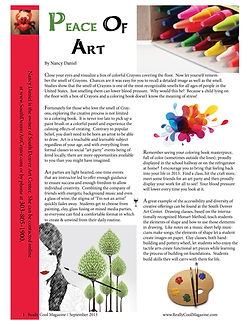
Marketing Materials

Touched by London Graphics specializes in harnessing the power of social media platforms such as Facebook, Instagram, X, Nextdoor, and others to enhance your business presence. Many individuals have a creative side, but not all clients may fully understand the design process or have a clear vision of what they want. To bridge this gap, it’s essential to ask clients thorough questions to grasp their objectives and target audience, rather than solely relying on their initial ideas.
By connecting their social media with their website and driving traffic to these platforms, clients can experience genuine growth in their business. We also provide analytics that demonstrate this growth, along with assistance in improving their SEO. This approach ensures that the creations align closely with the client's vision and goals, resulting in a more successful outcome.



















Blogging | Tags Key Words |Links





Being Creative | Having Fun
Creativity thrives on collaboration—bringing together the expertise of the designer, the insights of the client, and the contributions of team members. While many individuals have a creative side, not all clients are familiar with the design process or have a clear vision of what they want. To overcome this challenge, it's essential to engage clients with thoughtful and in-depth questions. By focusing on understanding their objectives and identifying the project's target audience, rather than relying solely on their initial ideas, you can create designs that not only meet but exceed their expectations. This collaborative approach ensures the final result aligns perfectly with their vision and goals, leading to a truly successful outcome.














Visual Perception of Color
What looks good to one person may be quite different for someone else. This subjectivity in color perception is influenced by our unique biological makeup and how our brains interpret colors to create meaningful experiences. The perception of color is largely processed in our minds, making it a personal and sometimes unpredictable experience influenced by individual backgrounds and memories. The human eye and brain combine to convert light into the sensations of color. Light receptors in the eye send signals to the brain, which then interprets these signals as colors. In the additive color model, red, green, and blue are considered the primary colors of light. Combining these colors in various ways can create a broad spectrum of hues that contribute to our overall visual experience. Understanding this process can help us appreciate how people perceive and interact with color.








